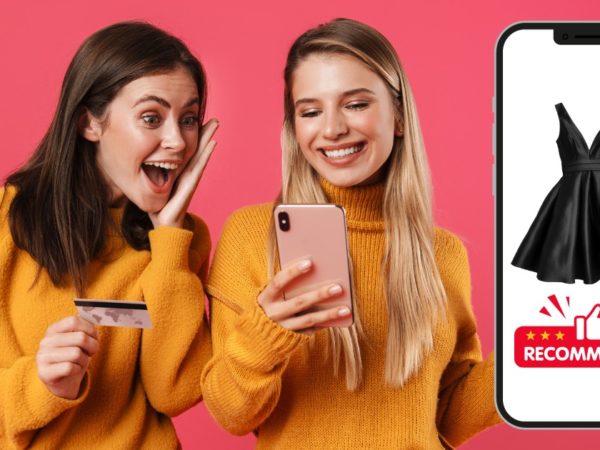As a marketer, you should have a comprehensive idea about color psychology and its influence on marketing.
Colors can affect human psychology in various ways, which is why marketers use this approach to influence their audience. You may have heard of using certain colors in logos or ads to evoke certain emotions. But color psychology is not easy as it may seem.
This article will share in-depth insights into color psychology, the importance of choosing the right color for marketing, and some examples of marketing with the right color.
What Is Color Psychology?
Color psychology refers to the knowledge stream that studies the relationship between colors and human behavior. It also wants to find out how colors affect our perception and thus play a key role in our day-to-day decision-making.
Though we often denote certain meanings to certain colors, how someone perceives one color depends on various external factors, including gender, location, childhood experience, context, and social values.
Speaking of marketing and branding, the subject focuses on the impact of colors on the audience and how colors can persuade consumers to choose a brand or make a purchase.
What is the Basis of Color Psychology Research?
The study of colors goes back several centuries. In 1704, Sir Isaac Newton created the color wheel based on his discovery of the visible spectrum or wavelength of light. It made people understand why and how colors work and later led to the discovery of other color wheels.
Fast forward to the 20th century. Swiss psychiatrist Carl Jung is one of the earliest persons associated with the study of color psychology. He found out the effects of color on human psychology to develop color therapy for his patients.
When it comes to modern-day color psychology research, the study deals with certain aspects like color choice, physiological responses to color, and its impact on human emotions and behavior.
How Colors Affect the Human Mind
Colors have a deep-rooted relationship with our feelings and emotions. Color can make you happy, sad, anxious, relieved, and angry. Psychological effects, biological conditioning, and cultural tradition contribute to these reactions. Here are some common colors and their effect on our minds:
- Red: Red is a warm color that represents passion and energy. It is also associated with love, anger, danger, and prohibition.
- Green: The color green symbolizes youth, birth, and rejuvenation. The color means optimism, refreshment, health, wealth, growth, possibility, and security.
- Blue: Blue means safety, calmness, and relaxation. It can also mean trust, professionalism, friendliness, and relaxation.
- Pink: Pink can be the color of romance. It is also associated with the girl child, youth, tenderness, charm, femininity, and rebellion.
- Yellow: Yellow is the color of happiness and spontaneity. It can also mean sunshine, energy, laughter, and hope.
- Black: Though traditionally associated with cold, sadness, and death in many societies, the color black refers to seriousness and sophistication. It also means mystery, power, elegance, and professionalism.
- Purple: Purple is the color of creativity, royalty, wealth, and mystery. Its darker shade can mean luxury, and the lighter shade means calmness.
- White: To any person, white means simplicity. Its abundant use can represent freshness. This neutral color is also associated with innocence and purity in different cultures.
How Colors Affect Marketing Strategies and Consumer Behavior
Colors can influence the perceptions and behaviors of customers in strange ways. Therefore, all marketing strategies include the right use of colors.
Brand Recognition
Once you can associate a color with your brand, the audience can identify you with the colors. Logos and brand names are where you can utilize the right colors. In such cases, even a small shade variation can be disastrous. Hence, you should have strict color consistency guidelines to use the exact same color everywhere.
Utilization of Associated Meanings
Every color has multiple meanings associated with it. Red can mean love, energy, or danger. Marketers need to consider their industry and business location before including it in their brand campaigns.
Product Discovery
With the right colors, you can get the attention of your customers. Colors are also important for packaging as it helps the customers distinguish your products from the rest. Marketers need to check the target audience demography and choose colors accordingly.
Seasonal Marketing
During seasonal promotions or holiday ad campaigns, using different colors than your usual ones can be useful. Customers find such changes to be attention-grabbing. For example, Halloween day promotions can contain black and orange, while Christmas celebration packs may have white and red.
Color Psychology in Branding
Marketing and branding experts use color psychology to create compelling advertising strategies for companies. If you are wondering why color psychology is so important in the branding and marketing of products and services, here are the reasons:
#1. Colors Can Evoke Feelings
Branding experts know how colors can give rise to different feelings in people through the study of color psychology. Hence, you see the use of blue on most software development company logos as it represents trust and professionalism.
#2. Colors Influence Customers Online and Offline
Color psychology is also helpful in influencing consumer behavior and perception. It lets marketers choose the right color for their customers so that they can easily recall the products everywhere — from a billboard to superstore shelves to a newspaper ad.
#3. Colors Make Your Brand Distinguishable
Color psychology allows you to choose the right colors according to your brand mission and values. Therefore, the target audience can easily distinguish you from your competitors.
How to Find the Right Color Palette
Have Proper Knowledge of the Color Wheel
To create a strong brand color palette, you need to have complete knowledge of the color wheel. Knowing the important terminologies and their meaning will help you in this process. Even if you are a marketer and not a designer, you need to understand the shades, hues, complementary colors, analogous colors, monochromes, etc.
Understand the Impact of Individual Colors
Every color has a different impact on the human mind. You need a detailed knowledge of color psychology that discusses how different colors affect our perception.
Perform Competitor Research on Colors
Analyzing the color palettes of your top five or ten competitors to get an idea about the color trends of your industry. However, you can choose a color palette that either matches the competitors or contrasts.
Consider Target Audience and Business Location
While choosing the right color palette for a brand, it is mandatory to consider the target audience and the culture of the business area. Find out what a color means to your primary audience and how that color associates with them culturally.
Choose the Colors That Align With Your Brand Identity
Finally, pick the color that goes well with your brand identity. If you are creating a logo for a green tech company, you can choose green instead of blue to demonstrate your organizational vision.
Examples of Color Psychology
Here are some examples of the top global brands using color psychology in their branding:
#1. Coca-Cola
Coca-Cola is the top beverage manufacturer in the world. Everyone is familiar with how the brand associates itself with red. The color symbolizes power, energy, urgency, and excitement. All these contribute to impulsive purchases and popularity among young people.
#2. Pepsi
Pepsi is another big name in the soft drinks industry and the biggest rival of Coca-Cola. You will see the abundant use of blue in their logo, with the minuscule presence of white and red. The logo colors aimed to establish Pepsi as the competitor of Coca-Cola and display patriotism to the US population during WWII. Both objectives were fulfilled effectively.
#3. Nickelodeon
Nickelodeon is a popular cable channel for children. Its logo includes the use of yellow and white. Yellow means playfulness and entertainment to kids, while adults find this color to be safe and reassuring. Thus, one logo became successful in convincing both groups.
#4. McDonald’s
McDonald’s is a fast-food giant that uses the color red in its logo to ignite energy and excitement. You will also find yellow in its logo, which represents happiness and hope. All these boost human appetite and are responsible for the popularity of this brand to some extent.
Learning Resources: Color Psychology
#1. Color Psychology: Profit From The Psychology of Color
This book will offer insight into the different psychological effects of colors. The profound impact of colors on human emotions is also discussed here.
This resource will also teach you how color can improve your bottom line, the magic colors that always work, and which color is the most suitable for your target audience.
Marketers, business executives, entrepreneurs, and anyone interested in the impact of color will be benefitted from it.
#2. Handbook of Color Psychology
Color psychology is a flourishing area, and this book comes with a comprehensive coverage of emerging theories and research on this topic.
As the prominent scholars provide their overviews on categorization, symbolism, preference, and variations of color perception, the resource aims to facilitate cross-fertilization among them.
It is a useful resource for any interested in the theoretical and applied areas of color psychology.
#3. Color Psychology and Color Therapy
This book focuses on the relationship between how we perceive colors and how it makes us react. It was originally published in 1950 and will help you gain insights into color psychology.
Conclusion
For marketing and branding professionals, colors are crucial to getting the attention of the target audience. Since colors can have different connotations for different people, having a deep understanding of color psychology is a must for them.
You can use this guide to learn how companies leverage color psychology to promote their brands and ad campaigns. It will also tell you how to choose the right color for your brand.
You can also read about beautiful color palette generators.



